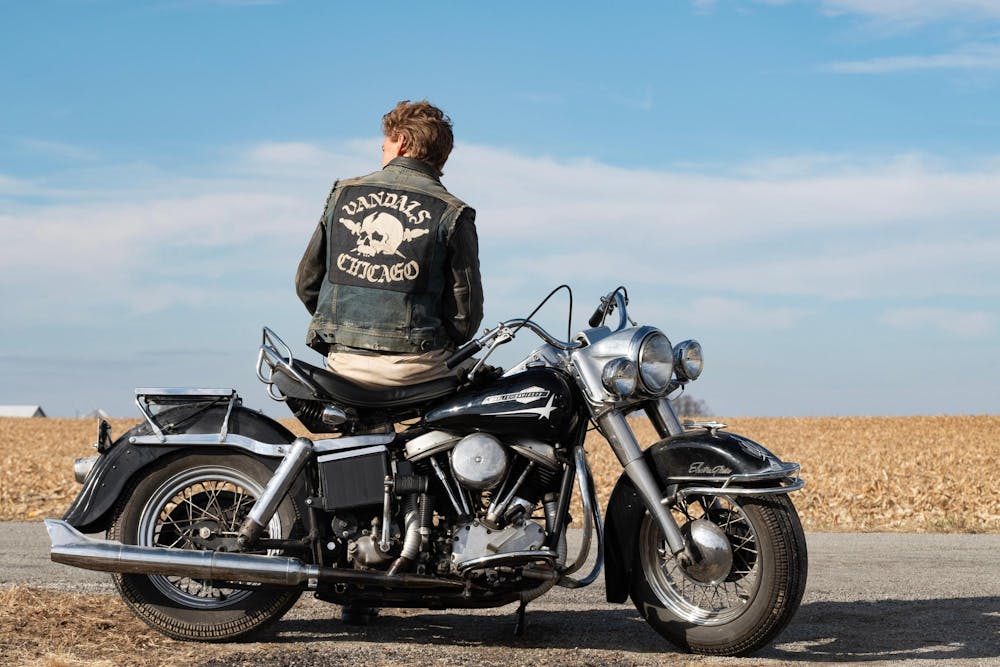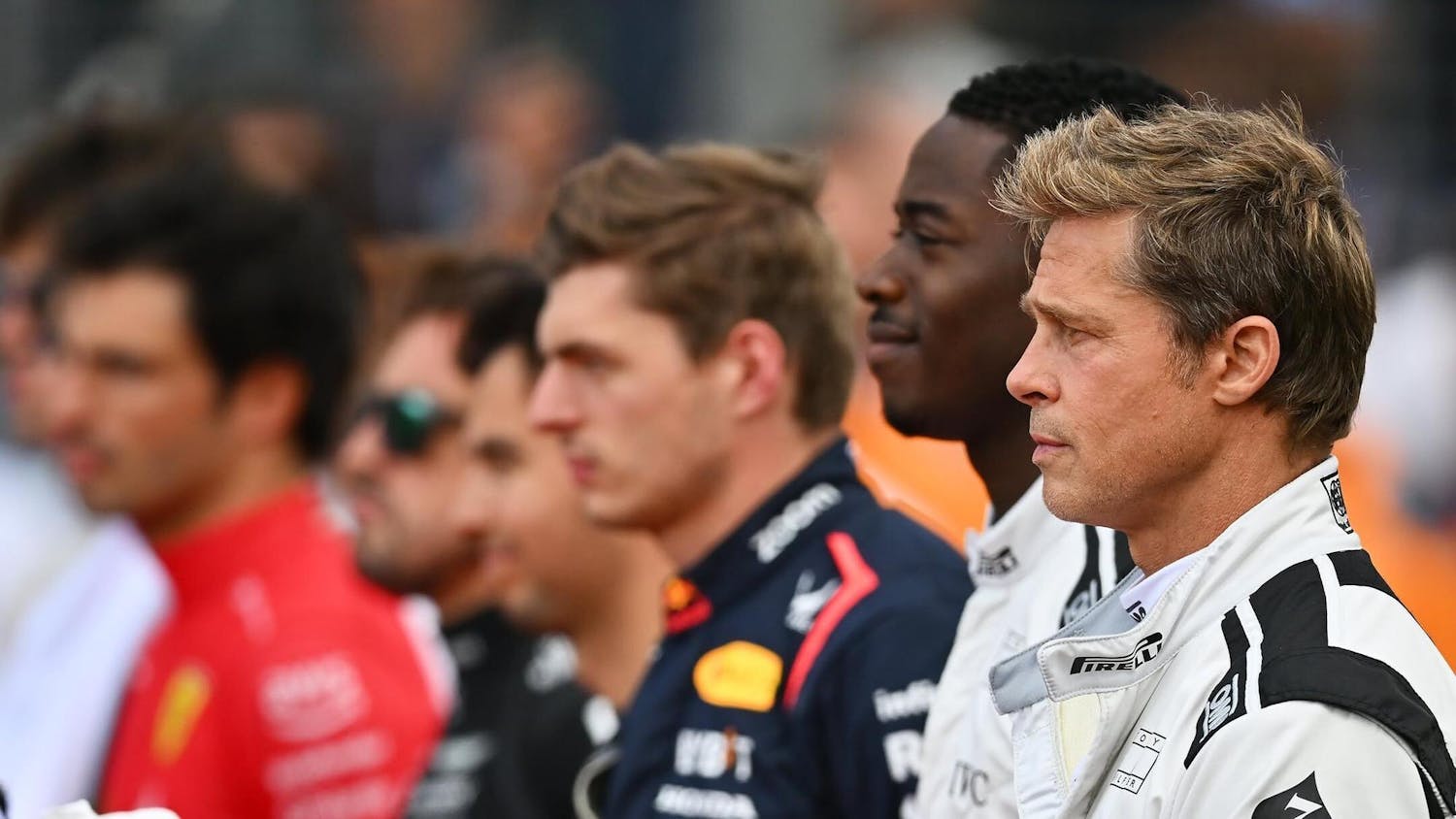In his book “Hell’s Angels: A Strange and Terrible Saga,” journalist Hunter S. Thompson noted that “In a nation of frightened dullards there is a shortage of outlaws, and those few who make the grade are always welcome.” This quote epitomizes the fascination with biker culture: motorcycle gangs, like all gangs, are an adverse response to the failings of the American Dream and with this in mind they strive to represent “true freedom,” whatever that may be. They’re a respite from the traditionally established rules we’ve put in place to call ourselves a “society.” Outlaw bikers, like those in the Hells Angels, live without concern — they simply don’t give a damn.
That’s an idealistic outlook, though. It’s easy to see what makes these groups so fascinating, especially in the context of the 1960s counterculture (Thompson’s book was released in 1967), but it’s irresponsible to ignore the festering rot underneath their gilded exterior. Jeff Nichols’ newest film, “The Bikeriders,” takes a long look at this rot, and it’s ultimately a film about the social conditions that lead to the sort of violent culture biker gangs represent. In this sense, it exists within the context of films like “Easy Rider,” the 1969 cult classic that, by sheer force of its popularity, remains the quintessence of the biker film subgenre and a wildly effective social critique.
“The Bikeriders” is inspired by a book of the same name by Danny Lyon, who himself is a character in the film. In fact, the framing device of the film is Lyon (here portrayed by Mike Faist) interviewing Kathy Cross (Jodie Comer), the wife of Austin Butler’s character Benny. Her voice is the integral one here — it’s through her eyes that we see most of the action, which, importantly, emphasizes the gang’s structural contradictions. It’s clear that, perhaps more than anything, “The Bikeriders” is a deconstruction of cultural masculinity, and that’s because biker gangs represent cultural masculinity to an extreme end.
The Vandals Motorcycle Club is depicted as a rowdy good ol’ boys club that Johnny Davis (Tom Hardy) was inspired to found after watching the 1953 film “The Wild One,” which features a famous portrayal of rebellious machismo by Marlon Brando.
“Hey Johnny, what are you rebelling against?” a girl asks Brando’s character in the film.
“What’ve you got?” he responds.
When Kathy first involves herself with the club, right at the beginning of "The Bikeriders,” there’s an extended sequence of her walking through their favorite dive joint: she’s ogled at and groped by the men there, cat-called and followed out after she leaves. Johnny, who doesn’t partake in this behavior, assures her that the guys are just “having fun,” but still promises to protect her.
It’s here that we have the main structural contradiction: Kathy’s desire to live a peaceful, safe lifestyle in direct conflict with Benny’s love of the outlaw lifestyle. It’s not too far-fetched to say that it’s almost a homoerotic relationship: the Vandals, and specifically Johnny, are Benny’s metaphorical paramour. There is an unrealized sexual undercurrent to the whole thing that ties into the themes of masculinity that Nichols, who also wrote the screenplay, is so fascinated with. There’s a clear amount of influence from Paul Shcrader and Martin Scorsese, two directors who’ve spent much of their careers exploring cultural masculinity amid socio-economic degradation — “Taxi Driver,” the film Schrader wrote and Scorsese directed, is an undeniable stylistic authority on this picture.
All this would be very uninteresting, however, if the film’s direction were lacking. Thankfully, Nichols imbues “The Bikeriders” with a singular style that is, for lack of a better phrase, effortlessly cool. Cinematographer Adam Stone shot the film on 35mm, which besides just being the overall better choice for most features, works to permeate a distinct grittiness and vintage flare that adds to its authenticity. If it were shot in black and white, it would be almost indistinguishable from Lyon’s original photographs that were the creative basis for the film’s aesthetic. At the risk of sounding like a broken record, this and the soundtrack choices really do work to make the picture feel like a spiritual successor to the New Hollywood movement of the 1960s and ’70s, mixed, too, with a bit of the exploitation fare of those decades. It’s an ode to the greats that, in the meantime, proves itself more than admirable.
I was skeptical of “The Bikeriders” essentially up to the moment I walked into the theater auditorium to see it — I was worried it’d be a male fantasy, a romanticized portrait of a generation that did little to deserve it. What I got instead was an image of a country in decline, a symbol of the heady dream of the 1960s quickly revealing itself to be a nightmare. It’s a point of contentious debate whether the political and social realities we’re currently experiencing
mirror those of that tumultuous era, but it’s certain that the themes Lyon explored then remain all too relevant now. But really, it has nothing to do with the present day; really what “The Bikeriders” is arguing is that these themes will always remain uniquely apposite to the American experience.




